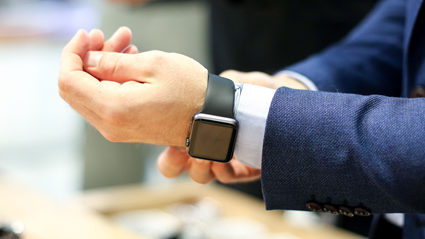Wearable devices, like that smartphone and the apps you love to use to track your daily runs, could impact your health in a good way. Apple, the giant electronics firm that launched the first smartphone wearable device, activated an intriguing new feature on its watch last month. The watch will perform a mobile electrocardiogram (ECG) and thus become the first mass-consumer medical device. The ECG—which is only available in America at the moment—notifies users of a condition called atrial fibrillation, an irregular heartbeat that can lead to conditions such as stroke or heart failure.
The watch already tells users if they have a fast or slow heartbeat, and will call emergency services if they fall and fail to get up. Wearable devices could save lives?
Health- and life-insurance companies seem to believe wearable devices can actually make users healthier. They are increasingly underwriting the cost of a range of wearables, including devices from Fitbit, Garmin and Polar. Aetna and United Healthcare, two big American health insurers, recently created a plan that subsidized the cost of Apple’s pricey watch. Customers of other insurers willing to upload their movement data can obtain a discount on health or life insurance. The more active they are, the greater the financial reward. But are these efforts any more than a gimmick?
Another insurance firm, the Vitality Group, set out to answer this question in 2015 when it started offering customers Apple Watches. The results of its study of 400,000 people were published recently, and are anything but gimmicky. Customers using the watch, along with incentives such as free coffee and cinema tickets, increased physical activity by 34% over two years. Overweight customers showed vastly larger gains. This represents a long-term shift in healthy behavior and is a big deal for insurers and governments struggling with the rise in chronic diseases such as diabetes and lung disease that is driven partly by a lack of physical activity. The key to success, it appears, is to give the watch away for free, but to make users pay larger premiums if they fail to meet activity goals.
